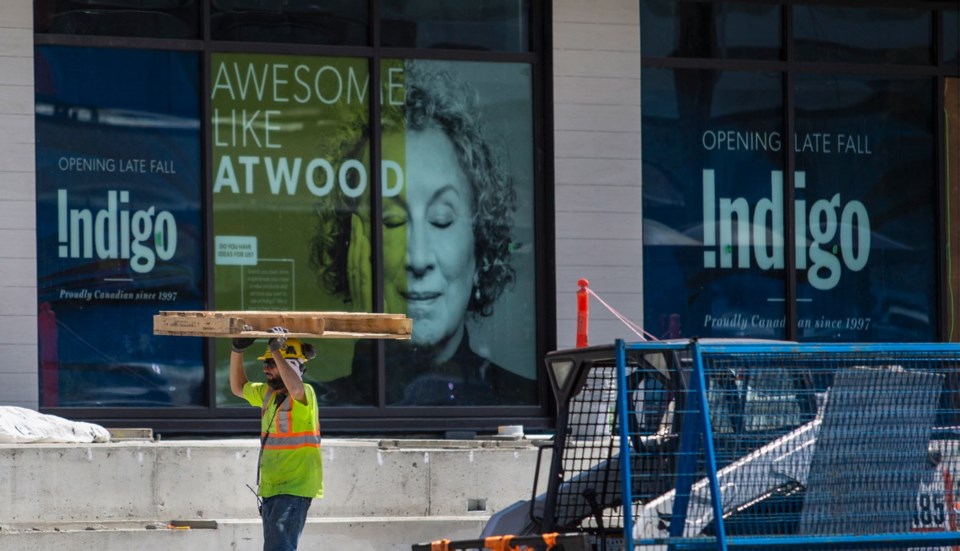Dollars devoted to building navy jetties, schools, shopping centres and roads in the capital region were up 10.5 per cent for the second quarter of this year compared with last.
Greater Victoria’s construction sector is healthy and anticipating more work in the coming year, said Rory Kulmala, chief executive officer of the Vancouver Island Construction Association.
A total of $121 million was spent on non-residential construction in the second quarter of this year, up from the $109 million spent in the second quarter of last year, Statistics Canada said in a new report.
B.C.-wide, investments in commercial and industrial building were the prime drivers in $1.6-billion worth of non-residential spending. Commercial climbed by $25 million and industrial rose by $19.7 million in the second quarter of 2018, compared with the second quarter of 2017.
Limiting the positive outlook, however, is the capital region’s ongoing labour shortage as older workers reach retirement age.
Other sectors — such as technology, health care and hospitality — are aggressively competing for people who would have joined the construction sector in the past, Kulmala said.
“We have a lot of competition out there for the same workers,” he said.
One of the province’s goals is to bring in more apprentices, but is a “bit of a challenge” to attract people, Kulmala said.
As well, projects elsewhere in B.C. and in other parts of the country are trying to attract the same workers, he said.
Even if someone is ready to work here, “the challenge that we still face is housing,” Kulmala said. Housing in the capital region is expensive and rental units are in short supply.
The tight labour market can restrict the ability of contractors to submit bids. Instead of three or four bids coming in for a given project, one or two might be submitted, he said.
Kulmala said he has reservations about the province’s move this week to ensure that major infrastructure projects be built by unionized workers.
Union officials praised the announcement while non-union contractors criticized it, saying it will add more costs.
The new “community benefits agreements” were billed by Premier John Horgan on Monday as prioritizing local hirings, better wages and more opportunities for apprenticeship training, and mark a return to 1990s-era construction rules that required workers on government projects to join trades unions.
This initiatives might lead to divisions within the construction sector, where the bulk of its makeup is non-union, Kulmala said.
Non-residential developments in the capital region include the in-progress sewage treatment system, slated to cost more than $760 million.
A and B Jetty at Canadian Forces Base Esquimalt are being replaced and the harbour is being remediated at a cost of about $781 million.
Workers are building out the $93-million Belmont Market in Langford, and the $72-million upgrade and expansion of Mayfair shopping centre is nearing completion.
Also fuelling this sector are ongoing road construction, new post-secondary school buildings and Point Hope Marine’s $50-million-plus expansion project with a graving dock.
There are two major developments with large office components: the Capital Park mixed-use project behind the legislature and the two-building office project, with mixed use at 1515 Douglas St.
North of the Malahat, the province has announced construction will begin in 2021 on a new Cowichan Valley Hospital that will be triple the size of the existing hospital.
Investment information in residential construction, on a provincial basis, was released by Statistics Canada on Thursday.
The data show $1.095 billion was spent in May, up by 9.4 per cent from May 2017.
In the capital region, “there’s a tonne of residential [construction] on the books,” Kulmala said. “You are going to see a fair amount of multi-family condominium units going in.”



